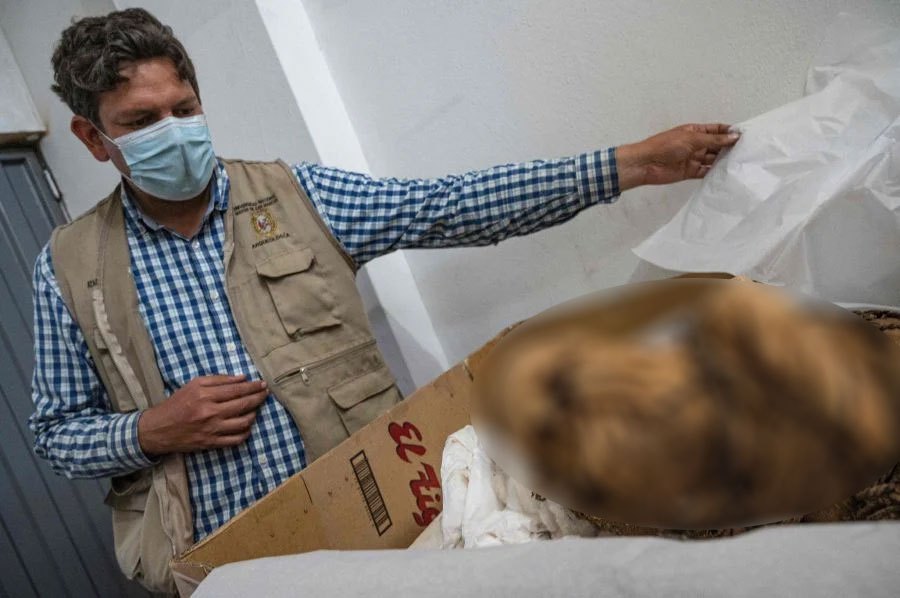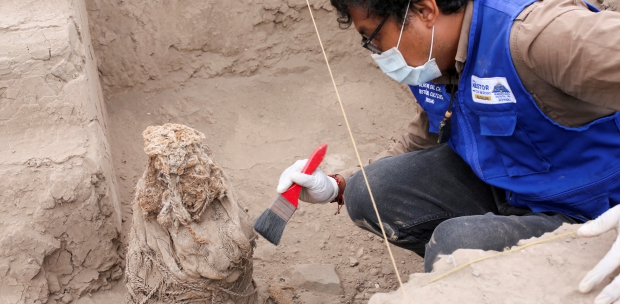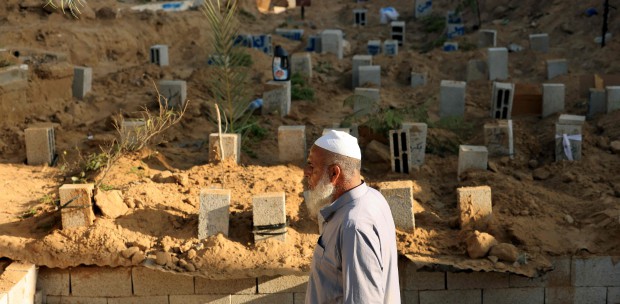LEANDRO Rivera says he chanced on the cave in Peru's remote Nazca region that contained hundreds of pre-Hispanic artifacts, including human bodies with elongated heads and what appeared to be only three fingers on each hand.
The plateau is famous for the Nazca lines, incisions on the desert floor forming birds and other animals visible from the air.
The ancient geoglyphs have long intrigued anthropologists and exert a powerful fascination over some believers in extraterrestrials.
Nazca is also known for salt flats that dehydrate and preserve human and animal remains, making it the site of important archeological finds that have deepened modern understanding of ancient cultures, and attracted grave robbers.
Rivera was convicted in 2022 of assault on public monuments for unearthing the artifacts.
He received a four-year suspended sentence and was fined about 20,000 Peruvian soles, short of the maximum penalty of an eight-year prison term.
His haul was thrust into the spotlight last year when two of the mummies ended up in Mexico as the centrepiece of congressional hearings on UFOs and extraterrestrial life.
Mexican journalist Jaime Maussan presented the bodies as a sign of life beyond Earth — a claim dismissed by scientists.
In an interview with Reuters, Rivera said he removed as many as 200 sets of remains from the cave, and some bodies had been smuggled out of Peru to France, Spain and Russia.
The presentation of bodies in Mexico, as well as Rivera's claims to have dozens more, has prompted some experts to ask whether Peru is losing the battle to stop the plunder of its archaeological sites to feed a lucrative black market for mummies and other pre-Hispanic artifacts.
"Peru has done a lot of work to try and control this trade," said Christopher Heaney, a Latin American history professor at Penn State University and author of a book on Peruvian mummies.
"But this implies that these claims for government success need to be re-examined a bit if objects like (the bodies in Mexico) can leave the country."
Reuters was granted rare access to the Culture Ministry's anti-smuggling unit at Lima's international airport and spoke to four government officials who said stricter penalties, more resources and better coordination were needed to fight the looting.
Evelyn Centurion, head of cultural heritage recovery for the ministry, said the government is working on a task force with police, the attorney-general, the Foreign Ministry and other departments to toughen penalties for looting cultural artifacts.
"The looting has not stopped. We need greater collaboration from local governments and local authorities to prevent these illicit acts."
Archaeological materials, including human remains, command high prices on a black market controlled by criminal groups, experts said.
Since the Covid-19 pandemic, trafficking in cultural goods has exploded around the world, according to Unesco and the World Customs Organisation (WCO).
Antiquities stores that had previously relied on in-person shopping turned to online sales to survive.
The shift to an online black market also allowed buyers to seek out illegal goods, rather than wait for invitations to elite in-person events, as the trade was typically run pre-pandemic, a WCO official said.
And tomb raiders went online to share information about how to locate and raid vulnerable sites.
"Social networks have become spaces for the sale of works of art and antiques of illegal origin," said Enrique Lopez-Hurtado, who was until recently the coordinator of the culture sector of Unesco Peru.
The sheer volume of online sales, and the demands of pandemic safety protocols, presented challenges for Customs officials inspecting shipments and trying to intercept illegal goods, the WCO official said.
Guido Lombardi, a medical doctor and anthropologist at the Peruvian University of Cayetano Heredia who specialises in mummy studies, said he has received texts on WhatsApp offering looted objects for sale, including terracotta figurines that are hundreds of years old.
The writers are from Reuters
The views expressed in this article are the author's own and do not necessarily reflect those of the New Straits Times





